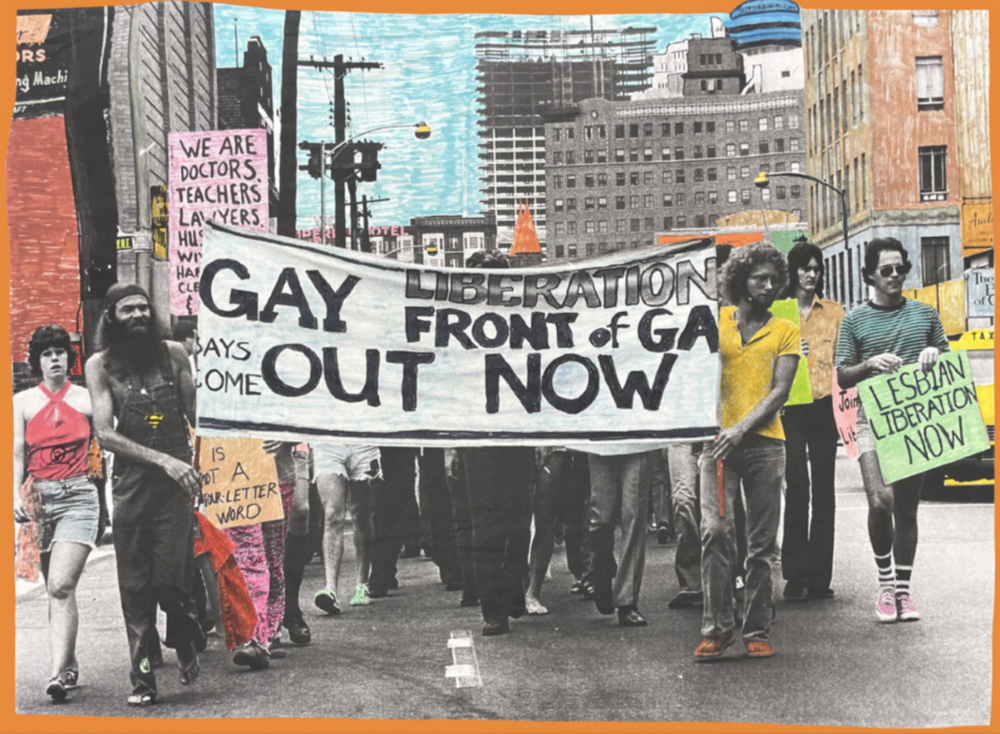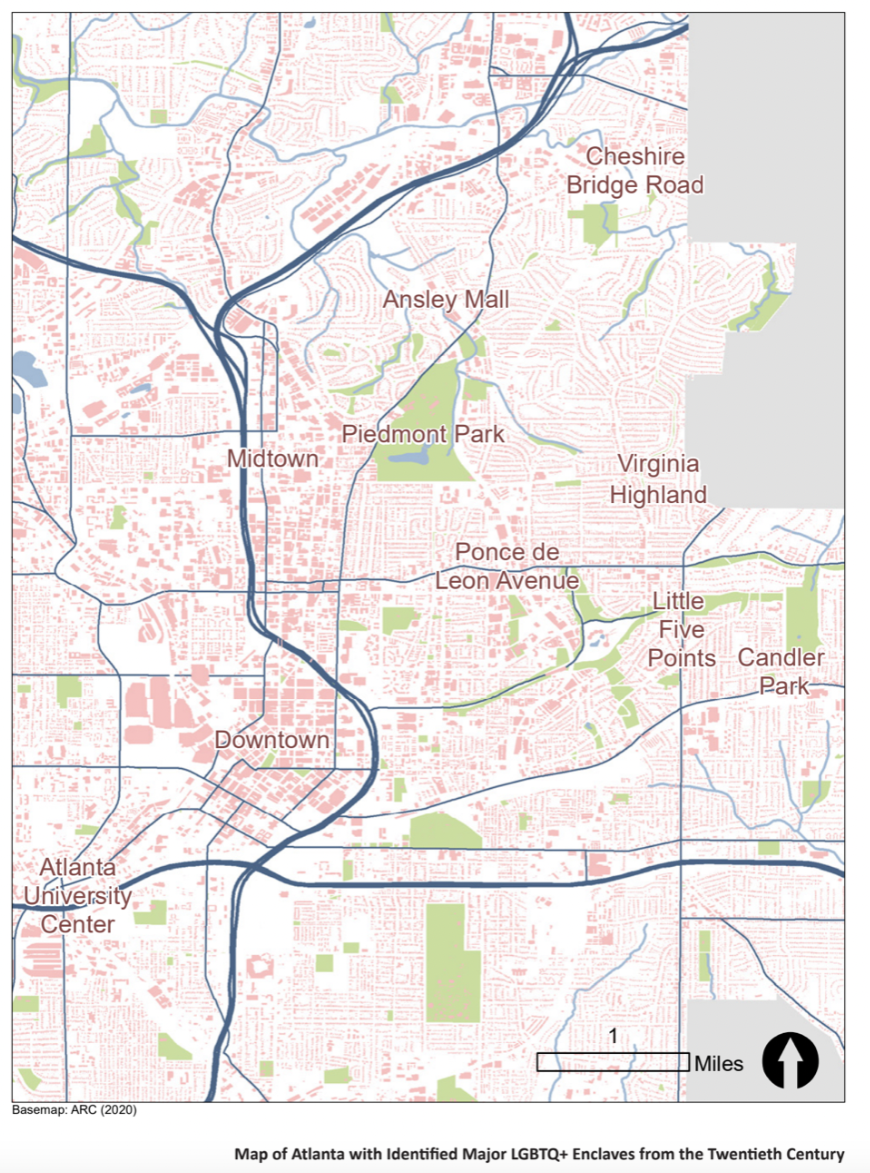
Caption
The second Atlanta Pride March, June 25, 1972, from the Atlanta LGBTQ+ Historic Context Statement report.
Credit: Source: Edmund Marshall, photographer. Originally published in The Great Speckled Bird newspaper, July 3, 1972. Image hand colored by Stephanie Coffin. Courtesy of WRFG 89.3 FM Atlanta


